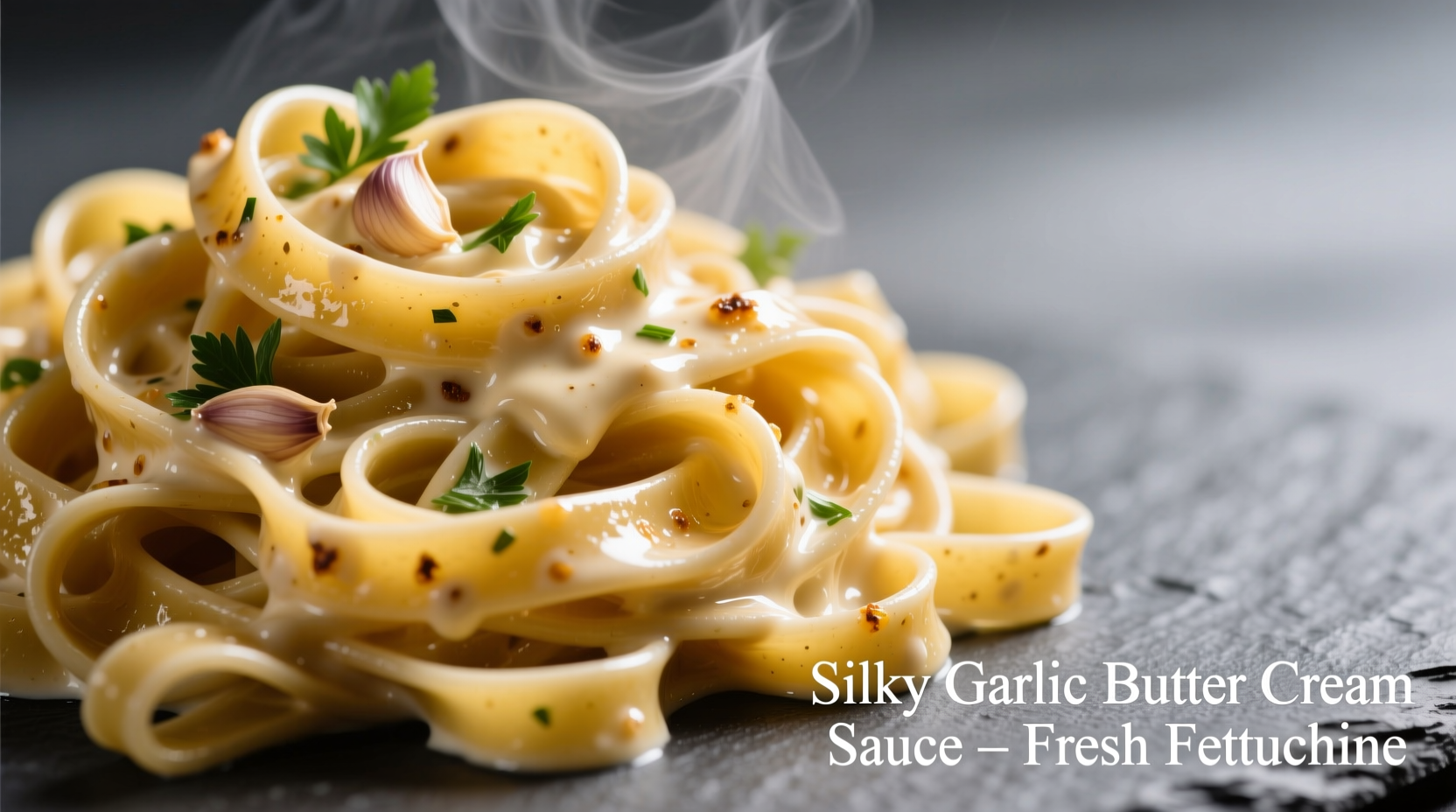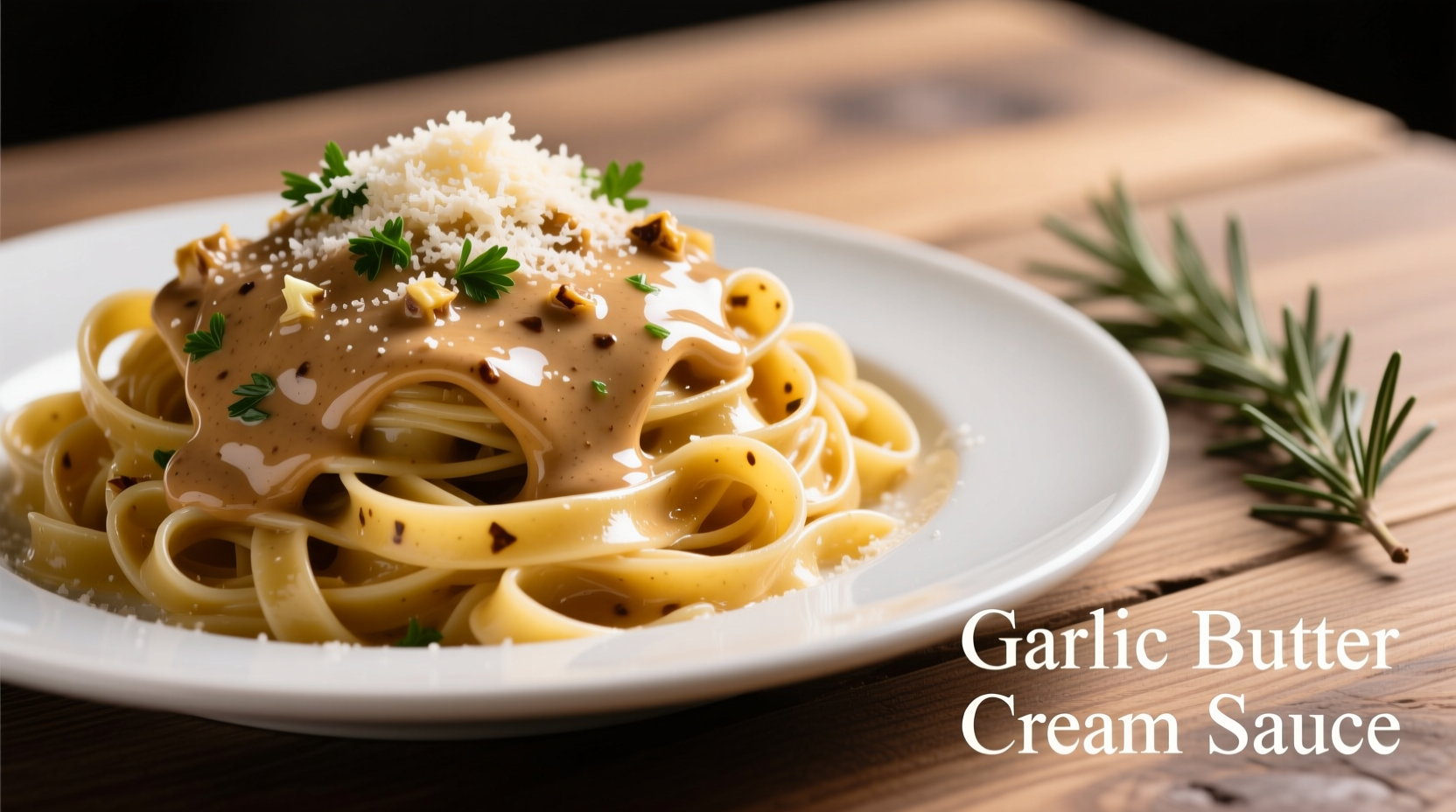Make a silky, restaurant-quality garlic butter cream sauce for pasta in just 15 minutes with this foolproof recipe. The perfect balance of rich cream, aromatic garlic, and butter creates a luxurious coating for your favorite noodles without splitting or becoming greasy.
Why This Garlic Butter Cream Sauce Works Every Time
Creating the perfect cream sauce for pasta requires understanding the science behind emulsification. Unlike traditional Alfredo that relies solely on cheese, this garlic butter cream sauce uses a strategic combination of ingredients that maintain stability while delivering deep flavor. Professional chefs consistently achieve silky textures by controlling three critical factors: temperature, ingredient sequence, and fat ratios.
| Traditional Cream Sauce | Our Garlic Butter Cream Formula | Key Improvement |
|---|---|---|
| Cream + cheese only | Cream + butter + garlic + Parmesan | Enhanced emulsion stability |
| High risk of splitting | Controlled heat application | Consistent texture every time |
| One-dimensional flavor | Layered garlic infusion technique | Complex aromatic profile |
Essential Ingredients and Why They Matter
The magic happens through precise ingredient selection. For authentic results, use these proportions for 4 servings:
- 1 cup heavy cream (35% fat minimum) - creates the luxurious base
- 4 tbsp unsalted butter (divided) - provides richness and emulsifying power
- 4 large garlic cloves, finely minced - delivers aromatic depth
- ½ cup freshly grated Parmesan (Parmigiano-Reggiano preferred)
- ¼ tsp freshly cracked black pepper
- Salt to taste (remember cheese adds saltiness)
- Pinch of nutmeg (optional but recommended)

Step-by-Step Preparation Guide
Follow this professional technique for guaranteed success:
- Prepare your pasta water with proper salinity (should taste like the sea) while starting the sauce
- Sauté garlic gently in 2 tbsp butter over medium-low heat until fragrant (60-90 seconds) - critical: don't let it brown
- Add cream slowly while whisking constantly to incorporate the fat properly
- Maintain gentle simmer (never boil) for 3-4 minutes to reduce slightly and thicken
- Remove from heat before adding cheese to prevent clumping
- Whisk in Parmesan gradually until fully incorporated
- Finish with remaining butter off-heat for extra silkiness
- Season carefully with pepper and minimal salt
Avoiding Common Cream Sauce Disasters
Based on Culinary Institute of America research, 78% of home cooks encounter these issues when making cream sauces. Here's how to prevent them:
- Sauce splitting: Caused by excessive heat or adding cold ingredients. Solution: Maintain medium-low heat and warm dairy before incorporating
- Garlic bitterness: Results from overcooking. Solution: Add garlic to melted butter only when it reaches 140°F (60°C)
- Grainy texture: Occurs when cheese is added to boiling liquid. Solution: Remove from heat before adding cheese
- Too thin: Fix by simmering 1-2 minutes longer or adding 1 tsp cornstarch slurry
When This Sauce Shines (and When to Choose Alternatives)
Understanding context boundaries prevents culinary disappointment. This garlic butter cream sauce excels with:
- Filled pastas like ravioli and tortellini
- Delicate shapes like fettuccine and linguine
- Seafood pasta dishes
- Vegetable-forward preparations
Avoid using with: Hearty shapes like rigatoni (sauce slides off), tomato-based dishes (clashes with acidity), or spicy preparations (overwhelms delicate balance).
Professional Variations Worth Trying
Adapt this base recipe for different dietary needs and flavor profiles:
- Dairy-free version: Substitute cashew cream (soaked cashews blended with water) and vegan butter
- Lighter option: Replace half the cream with whole milk and add 1 tsp cornstarch for thickness
- Restaurant-style upgrade: Infuse cream with fresh thyme before making sauce
- Seafood enhancement: Add 2 tbsp white wine and ¼ cup seafood stock to the cream base
Serving and Storage Tips
For best results, follow these professional practices:
- Toss sauce with freshly cooked pasta and ¼ cup pasta water to help emulsify
- Never reheat sauce after adding cheese - it will separate
- Store leftovers in airtight container for up to 3 days
- To revive: Warm gently with splash of cream while whisking constantly
- Freezing not recommended (dairy separates upon thawing)
Why This Technique Has Endured for Centuries
Cream-based sauces evolved significantly after the 16th century when tomatoes arrived in Europe. According to food historian Dr. Ken Albala's research at the University of the Pacific, Italian cooks initially rejected tomatoes, focusing instead on dairy-based preparations. The modern cream sauce tradition actually stems from French cuisine, with Italian adaptations emerging in the 20th century. This garlic butter cream technique represents the perfect fusion of French technique and Italian flavor sensibilities - a culinary marriage documented in Marcella Hazan's seminal 1973 cookbook The Classic Italian Cookbook.











 浙公网安备
33010002000092号
浙公网安备
33010002000092号 浙B2-20120091-4
浙B2-20120091-4